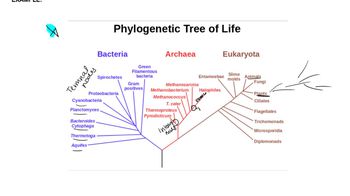Table of contents
- 1. Introduction to Genetics51m
- 2. Mendel's Laws of Inheritance3h 37m
- 3. Extensions to Mendelian Inheritance2h 41m
- 4. Genetic Mapping and Linkage2h 28m
- 5. Genetics of Bacteria and Viruses1h 21m
- 6. Chromosomal Variation1h 48m
- 7. DNA and Chromosome Structure56m
- 8. DNA Replication1h 10m
- 9. Mitosis and Meiosis1h 34m
- 10. Transcription1h 0m
- 11. Translation58m
- 12. Gene Regulation in Prokaryotes1h 19m
- 13. Gene Regulation in Eukaryotes44m
- 14. Genetic Control of Development44m
- 15. Genomes and Genomics1h 50m
- 16. Transposable Elements47m
- 17. Mutation, Repair, and Recombination1h 6m
- 18. Molecular Genetic Tools19m
- 19. Cancer Genetics29m
- 20. Quantitative Genetics1h 26m
- 21. Population Genetics50m
- 22. Evolutionary Genetics29m
22. Evolutionary Genetics
Phylogenetic Trees
Problem 31
Textbook Question
Textbook QuestionRecent reconstructions of evolutionary history are often dependent on assigning divergence in terms of changes in amino acid or nucleotide sequences. For example, a comparison of cytochrome c shows 10 amino acid differences between humans and dogs, 24 differences between humans and moths, and 38 differences between humans and yeast. Such data provide no information as to the absolute times of divergence for humans, dogs, moths, and yeast. How might one calibrate the molecular clock to an absolute time clock? What problems might one encounter in such a calibration?
 Verified Solution
Verified SolutionThis video solution was recommended by our tutors as helpful for the problem above
Video duration:
1mPlay a video:
241
views
Was this helpful?
Related Videos
Related Practice

